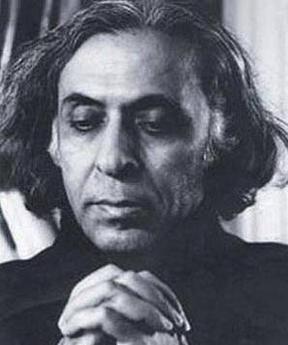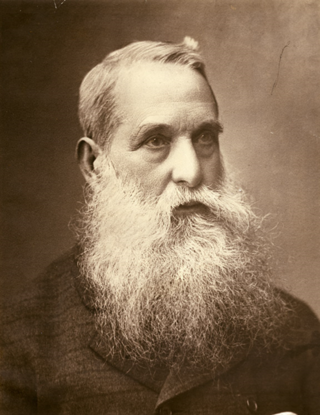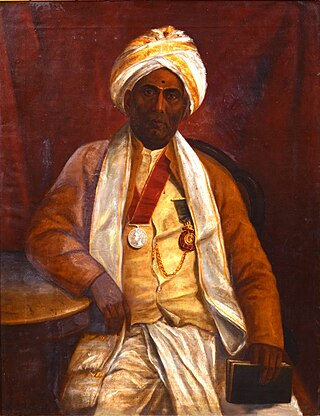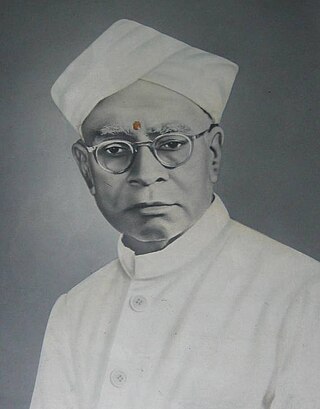Related Research Articles

Raja Ram Mohan Roy was an Indian reformer who was one of the founders of the Brahmo Sabha in 1828, the precursor of the Brahmo Samaj, a social-religious reform movement in the Indian subcontinent. He was given the title of Raja by Akbar II, the Mughal emperor. His influence was apparent in the fields of politics, public administration, education and religion. He was known for his efforts to abolish the practices of sati and child marriage. Roy is considered to be the "Father of Indian Renaissance" by many historians.

Henry Thomas Colebrooke FRS FRSE FLS was an English orientalist and botanist. He has been described as "the first great Sanskrit scholar in Europe".

Horace Hayman Wilson was an English orientalist who was elected the first Boden Professor of Sanskrit at Oxford University.

Colonel Colin Mackenzie was Scottish army officer in the British East India Company who later became the first Surveyor General of India. He was a collector of antiquities and an orientalist. He surveyed southern India, making use of local interpreters and scholars to study religion, oral histories, inscriptions and other evidence, initially out of personal interest, and later as a surveyor. He was ordered to survey the Mysore region shortly after the British victory over Tipu Sultan in 1799 and produced the first maps of the region along with illustrations of the landscape and notes on archaeological landmarks. His collections consisting of thousands of manuscripts, inscriptions, translations, coins and paintings, which were acquired after his death by the India Office Library and are an important source for the study of Indian history. He was awarded a Companion of the Order of the Bath on 4 June 1815.

Raja Rao was an Indian-American writer of English-language novels and short stories, whose works are deeply rooted in metaphysics. The Serpent and the Rope (1960), a semi-autobiographical novel recounting a search for spiritual truth in Europe and India, established him as one of the finest Indian prose stylists and won him the Sahitya Akademi Award in 1963. For the entire body of his work, Rao was awarded the Neustadt International Prize for Literature in 1988. Rao's wide-ranging body of work, spanning a number of genres, is seen as a varied and significant contribution to Indian English literature, as well as World literature as a whole.
Bāṇabhaṭṭa was a 7th-century Sanskrit prose writer and poet from India. He was the Asthana Kavi in the court of the Emperor Harsha, who reigned c. 606–647 CE in northern India, first from Sthanvishvara, and later Kanyakubja. Bāna's principal works include a biography of Harsha, the Harshacharita, and one of the world's earliest novels, Kadambari. Bāṇa died before finishing the novel and it was completed by his son Bhūṣaṇabhaṭṭa. Both these works are noted texts of Sanskrit literature. The other works attributed to him are the Caṇḍikāśataka and a drama, the Pārvatīpariṇaya. Banabhatta gets an applause as "Banochhistam Jagatsarvam" meaning Bana has described everything in this world and nothing is left.

Arthur Coke Burnell was an English civil servant who served in the Madras Presidency who was also a scholar in Sanskrit and Dravidian languages. He catalogued the Sanskrit manuscripts in southern India, particularly those in the collections of the Tanjore court collections. He was, with Henry Yule, a co-compiler of the Hobson-Jobson, a compendium of Anglo-Indian terms.

Linnaeus Tripe was a British pioneer of photography, best known for his photographs of India and Burma taken in the 1850s.

The Mānasāra, also known as Manasa or Manasara Shilpa Shastra, is an ancient Sanskrit treatise on Indian architecture and design. Organized into 70 adhyayas (chapters) and 10,000 shlokas (verses), it is one of many Hindu texts on Shilpa Shastra – science of arts and crafts – that once existed in 1st-millennium CE. The Manasara is among the few on Ancient Indian architecture whose complete manuscripts have survived into the modern age. It is a treatise that provides detailed guidelines on the building of Hindu temples, sculptures, houses, gardens, water tanks, laying out of towns and other structures.

Hindu architecture is the traditional system of Indian architecture for structures such as temples, monasteries, statues, homes, market places, gardens and town planning as described in Hindu texts. The architectural guidelines survive in Sanskrit manuscripts and in some cases also in other regional languages. These texts include the Vastu shastras, Shilpa Shastras, the Brihat Samhita, architectural portions of the Puranas and the Agamas, and regional texts such as the Manasara among others.
Adi Dharm refers to the religion of Adi Brahmo Samaj the first development of Brahmoism and includes those Sadharan Brahmo Samajists who were reintegrated into Brahmoism after the second schism of 1878 at the instance of Devendranath Tagore. This was the first organised casteless movement in British India and reverberated from its heart of Bengal to Assam, Bombay State, Punjab and Madras, Hyderabad, and Bangalore.

Sir Thiruvarur Muthuswamy Iyer was an Indian lawyer who, in 1877, became the first native Indian during the British Raj to be appointed as justice of the High Court of Madras, acting as Chief Justice in 1893.

Lieutenant-General Sir Mark Cubbon KCB was a British army officer with the East India Company who was the Chief Commissioner of Mysore 1834 to 1861. During his tenure, he established a law and order system, introduced judicial and economic reforms and through action in all spheres of governance helped develop the economy of Mysore. He resigned from his office in 1860 due to ill-health and left for England for the first time since his arrival in India as a cadet in 1800. The administration of the Kingdom of Mysore under his leadership ensured that the 1857 rebellion had almost no impact in the region. He died in 1861 on board ship at Suez. Cubbon Road and Cubbon Park in Bangalore are named after him.

Kallidaikurichi Aiyah Nilakanta Sastri was an Indian historian who wrote on South Indian history. Many of his books form the standard reference works on the subject. Sastri was acclaimed for his scholarship and mastery of sources and was a recipient of the third highest Indian civilian honour, the Padma Bhushan.
Diwan Bahadur Sakkottai Krishnaswamy Aiyangar was an Indian historian, academician and Dravidologist. He chaired the Department of Indian History and Archaeology at the University of Madras from 1914 to 1929.
AvadhanumPaupiah was a dubash, or interpreter in the service of the British East India Company. He was of Telugu origin.

Robert Home (1752–1834) was a British oil portrait painter who travelled to the Indian subcontinent in 1791. During his travels he also painted historic scenes and landscapes.
Charles Matthew Whish (1794–1833) was an English civil servant in the Madras Establishment of the East India Company. Whish was the first to bring to the notice of the western mathematical scholarship the achievements of the Kerala school of astronomy and mathematics. Whish wrote in his historical paper: Kerala mathematicians had ... laid the foundation for a complete system of fluxions ... and their works ... abound with fluxional forms and series to be found in no work of foreign countries. Whish was also a linguist and had prepared a grammar and a dictionary of the Malayalam language.

Caste panchayats, based on caste system in India, are caste-specific juries of elders for villages or higher-level communities in India. They are distinct from village panchayats in that the latter, as statutory bodies, serve all villagers regardless of caste, although they operate on the same principles. A panchayat could be permanent or temporary.

Rasamay Dutt or Russomoy Dutt was a notable Bengali educationist of British India during the Bengali Renaissance. He was the co-founder of Hindu School, Kolkata. Bengali poet Toru Dutt was his granddaughter.
References
- ↑ Essays on the Architecture of the Hindus. London: Royal Asiatic Society. 1834.
- ↑ Ram Raz (1836). "On the Introduction of Trial by Jury". Journal of the Royal Asiatic Society: 244–257.
- ↑ Bayly, C. A. (2007). "Rammohan Roy and the advent of constitutional liberalism in India, 1800–30". Modern Intellectual History. 4 (1): 25–41. doi:10.1017/S1479244306001028. ISSN 1479-2443. S2CID 145404296.
- ↑ Desai, Madhuri (2012). "Interpreting an Architectural Past: Ram Raz and the Treatise in South Asia". Journal of the Society of Architectural Historians. 71 (4): 462–487. doi:10.1525/jsah.2012.71.4.462.